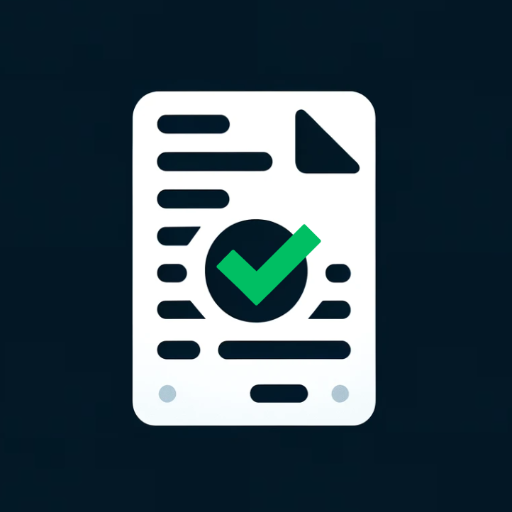Voice Architect-writing style enhancement tool
Transform your writing with AI-powered precision
Create a writing tone & syntax style for the personality attached to this document.
Create a writing tone & syntax style for the personality for:
Related Tools
Load More
Voice Creator
Transforms text into lifelike spoken audio, offers multiple AI voices, and assists in script generation.

Voice Generator
Voice and Sound Specialist: Create and Customize your Own Unique AI Voice, Easily Add or Change Video Sounds. Prompts to All Sounds (GPT5 PREPARED)

AI Voice Emotions! Text To Speech Editor
Add emotions for text-to-speech outputs, utilizing SSML for dynamic and expressive voice synthesis. Optimized for leading text-to-speech technologies.(Beta)

Voice Engine Text To Speech
Converts text to speech, max 4096 chars, 6 voices

Voice Control
Guides users on how to use Voice Control for ChatGPT and fix any technical issues

Your Voice
I transform text into speech, matching voices from audio or video snippets, with a comforting tone.
20.0 / 5 (200 votes)
Introduction to Voice Architect
Voice Architect is a sophisticated tool designed to assist users in creating, refining, and replicating unique writing styles or narrative voices. It is built with the purpose of offering a comprehensive suite of features that enable writers, content creators, and brands to establish consistent and distinct voices across various forms of communication. Whether it’s for developing a brand's tone, crafting character voices in fiction, or ensuring that a company's communications maintain a unified style, Voice Architect serves as an invaluable resource. The platform allows users to define critical elements such as diction, syntax, tone, and rhythm, tailoring the voice to fit specific contexts or audiences. For example, a content creator working on a series of social media posts for a brand might use Voice Architect to establish a casual, friendly tone with short, punchy sentences and colloquial language. This ensures that all posts maintain a consistent voice, resonating with the target audience. Similarly, a novelist can utilize the tool to develop distinctive voices for different characters, incorporating varied sentence structures, vocabularies, and rhythms that reflect each character’s background and personality.

Main Functions of Voice Architect
Voice Development
Example
A marketing agency could use Voice Architect to create a unique brand voice for a new product line, specifying the tone, word choice, and rhythm to appeal to a young, tech-savvy audience.
Scenario
In a scenario where a tech company is launching a new gadget aimed at millennials, Voice Architect helps the agency develop a voice that is energetic, forward-thinking, and slightly informal, matching the preferences of the target demographic.
Style Replication
Example
An author could employ Voice Architect to maintain a consistent narrative voice across a multi-book series, ensuring that the tone, diction, and syntax remain uniform even as the story evolves.
Scenario
For a fantasy series with multiple books, where maintaining the consistency of the protagonist’s voice is crucial, Voice Architect can analyze the style of previous books and replicate it in future installments, preserving the narrative coherence.
Custom Character Voices
Example
A screenwriter might use Voice Architect to develop distinct voices for each character in a script, integrating unique speech patterns and vocabulary that reflect their individual personalities.
Scenario
In a television drama featuring a diverse cast, Voice Architect assists in creating character-specific dialogues that distinguish each personality—such as a highly educated professor using complex language and a street-smart detective speaking in short, direct sentences.
Ideal Users of Voice Architect
Authors and Screenwriters
Authors and screenwriters can greatly benefit from Voice Architect as it allows them to create, manage, and replicate distinct voices for their characters. By ensuring that each character’s speech and narrative style remains consistent throughout a work, writers can enhance the authenticity and depth of their stories. The tool is especially valuable in projects that span multiple books or episodes, where maintaining continuity in character voices is essential.
Marketing and Branding Professionals
Marketing and branding professionals are ideal users of Voice Architect, as it helps them craft and sustain a unique brand voice across various communication channels. Whether creating content for social media, advertising campaigns, or internal communications, these professionals can use Voice Architect to ensure that their messaging is consistent, on-brand, and tailored to their target audience. This tool is particularly useful in brand repositioning efforts, where establishing a new tone or style is crucial to the success of the brand.

How to Use Voice Architect
Step 1
Visit aichatonline.org for a free trial without login, also no need for ChatGPT Plus.
Step 2
Choose your writing style or narrative voice by selecting pre-built templates or uploading a document for analysis.
Step 3
Input your text or prompt, and let Voice Architect analyze and adjust the writing style according to the selected or uploaded framework.
Step 4
Review and refine the output, adjusting tone, syntax, or other stylistic elements as needed using Voice Architect’s advanced settings.
Step 5
Download or export your content in your desired format, or directly integrate it into your project.
Try other advanced and practical GPTs
Larry— Investment Banking Analyst
AI-powered expert for finance students.
Discrete Mathematics
AI-powered Discrete Mathematics Solutions
Web Code Analyzer
AI-powered web vulnerability detection tool.

Product Copywriting Description + CVR Optimizer
AI-powered copy to boost conversions
Copywriting Coach
AI-Powered Copywriting Made Simple

Idiomatic Content Optimizer Pro with Copywriting
AI-powered content enhancement and SEO optimization.

Avatar Utópico do Pedro Sobral | Gestor de Tráfego
Optimize and Scale Your Ad Campaigns with AI.

Age Shift Portrait
AI-driven age transformation made easy

Personal Branding Advisor
Elevate Your Personal Brand with AI

Big Sis Marketer
AI-powered marketing guidance and job search

Resume Editor
AI-powered tool to perfect your resume

Romance Writing Coach
AI-powered Romance Writing Assistant

- Academic Writing
- Content Creation
- Marketing Copy
- Technical Writing
- Fiction Writing
Frequently Asked Questions about Voice Architect
What is Voice Architect designed to do?
Voice Architect is a tool designed to help users create and refine written content by analyzing and mimicking specific writing styles, tones, and voices. It provides detailed customization to match the unique voice needed for any project.
Can Voice Architect analyze my existing writing style?
Yes, Voice Architect can analyze any text you upload to extract key stylistic elements such as diction, syntax, and tone. It uses this analysis to help replicate or refine your writing style in future projects.
Is Voice Architect suitable for both creative and technical writing?
Absolutely. Voice Architect is versatile and can be used for various writing scenarios, whether you’re crafting a fictional narrative, academic paper, marketing content, or technical documentation.
What are the customization options in Voice Architect?
Voice Architect offers extensive customization options, including tone adjustment, sentence complexity, level of detail, and the use of literary techniques. This allows users to fine-tune their writing to suit their specific needs.
Does Voice Architect require any prior writing experience?
No prior writing experience is necessary. Voice Architect is designed to be user-friendly, with intuitive controls that help both novice and experienced writers enhance their work.